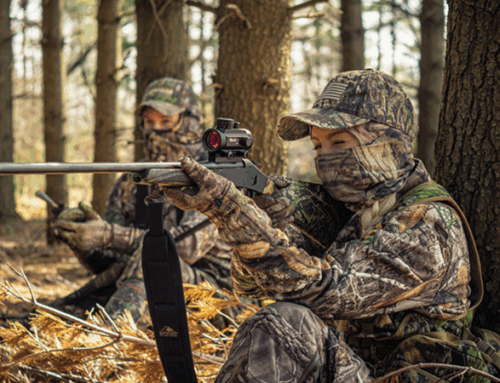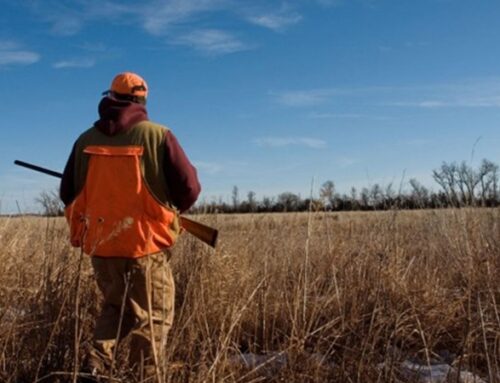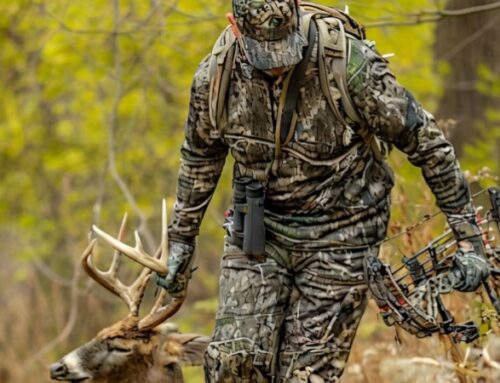Hunting involves a lot more than just going out into the woods with a shotgun or bow and arrow and returning home with an animal strapped to the hood of your car. The hunter must strategize how to attract an animal into his range. To do this, he plays to the animal’s senses. He appeals to the animal’s sense of sight by setting up a decoy that resembles a certain creature — hoping prey ambles in its direction. He appeals to the animal’s sense of smell by scenting his own clothing with something his prey will find attractive. And lastly, he appeals to the animal’s sense of hearing by making sounds that are music to its ears. These sounds are called hunting calls.
Hunting calls are noises hunters make to attract specific animals. Some hunters make hunting calls with their own hands and mouths. Others use store-bought or homemade hunting call devices. Believe it or not, there are hundreds of techniques and calls for a hunter to learn.
Hunting calls are not a new-fangled, recent breakthrough in hunting. Native Americans used turkey wing bone hunting calls at least 4,000 years ago. After joining the small bones together, they would put them to their mouths and suck in air, creating a sound much like a turkey.
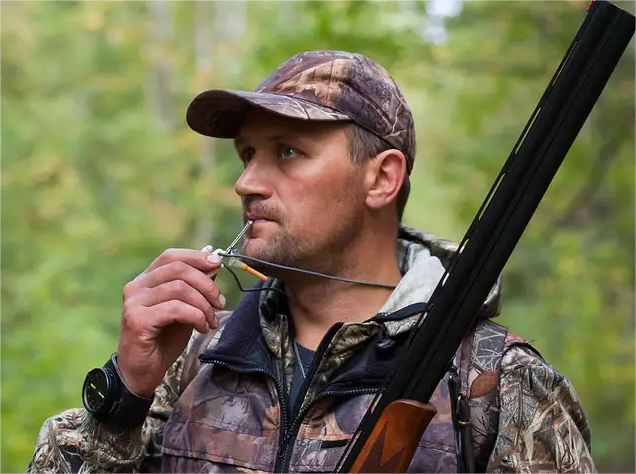

As you might guess, hunting calls mimic animal noises. For example, female deer make a specific sound when they’re looking to mate. If a hunter mimics that sound, it will attract male deer. Different animals are attracted to different sounds, and it’s important you understand which call attracts which animal. After all, calling for a turkey and accidentally attracting a bear probably won’t end well for you.
Mating calls aren’t the only way to attract prey, however. You can also grab their attention by saying a friendly “hey” in their language. But how?
Hunting calls are a lot like musical instruments — they require serious practice to master. There are dozens of different types of hunting calls. Many calls are mass-produced, others are artistically handcrafted. Some calls work when air is blown through them. Others are electronic and work at the push of a button. And some hunters don’t use mechanical calls at all — they instead whistle or click with their own mouths. Let’s investigate some of the more popular hunting call devices.
First up are hand calls. You hold these devices to your mouth and either suck air in or out to produce a sound. These calls have five basic parts:
- Barrel — the hollow tube through which you blow air
- Stopper — the end piece of the call, usually held in the hand
- Tone board — the part of the call that makes noise. A reed vibrates against the tone board to produce sound.
- Reed — works with the tone board to produce sound. It can be curved or flat and there can be one or more.
- Wedge — holds the reed in position on the tone board


Those pieces work together to produce sound when you blow into the mouthpiece of the call. You hold the barrel to your mouth and put your hand at the other end of the device to regulate the sound coming out. The reed, tone board and wedge are collectively called the insert, and hunters often refer to this as the call’s guts. Machines or artisans cut reeds in different shapes to lend the call different sound properties, and they can be made of bamboo, wood or even metal — although metal reeds tend to freeze in cold temperatures. Calls can be made of plastic, or turned by hand on a lathe, a machine used to shape wood. Many hand calls are double-ended, with a whistle on one end. Hand calls are typically used for waterfowl, turkey, deer or coyotes.
A box call makes sounds when its pieces are rubbed together. Usually made of wood like cedar or walnut, a box call is a rectangular, hollow box with slightly arched sides that serve as sounding boards. A lid, also called a paddle, is attached to the top by a hinge screw, so it can move back and forth, and attached to that is a handle. To produce clucks, yelps, gobbles and other sounds, you scrape the paddle against the sides of the box. The quality of the sound depends on the shape of the box’s sides. Push-pull calls, recommended for beginners, work similarly, except instead of scraping the paddle, you push and pull a plunger to produce sound. Turkeys are the primary target for box calls.
The diaphragm call, also a hand call, comes in two types — exterior and interior. An exterior diaphragm call is a thin piece of latex stretched over a plastic tube. You hold the latex-end of the call up against your mouth and blow. If you stretch the latex with your mouth in different ways as you blow, you can produce different sounds.
An interior diaphragm call actually goes inside your mouth, so you don’t need to use your hands at all. The diaphragm fits on the roof of your mouth, with the reeds facing forward. You blow deeply through the mouthpiece, working your jaw up and down to make different sounds. Diaphragm calls typically attract turkey, hens or elk. Speaking of elk, many hunters use a bugle to attract them. Elk bugles are diaphragm calls, but with a tube added to the end that amplifies the sound.
Electronic calls store different sounds on a computer chip, and work at the push of a button. A champion caller usually records the sounds in a professional studio. Several states prohibit the use of electronic calls, so you should check with your local game officials. Some people argue that using electronic calls is an unfair hunting practice.

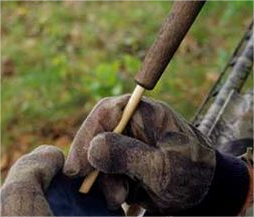
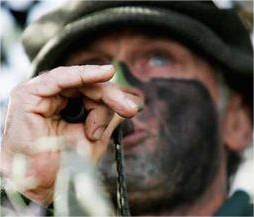
It’s not hard to figure out that certain calls attract certain animals. But you can’t just mutter “gobble gobble” and expect a turkey to stroll out of the brush. There are different calls for different scenarios, and the challenge is learning when to use which. Most sportsmen consider mastering the different types of calls part of the art of hunting, which is why there’s no one-size-fits-all type of call. Sometimes a hunter wants to draw game closer. Sometimes he or she wants to spook a bird out of its hiding place. Let’s check out some common game birds and the sounds you can use to attract them — whether you’re making the sound yourself or using a mechanical device or electronic box.
There are dozens of different calls for turkey hunting. Wild turkeys are notoriously fickle, and will answer — or not answer — to a variety of calls. Here are a few and what they mean:
A cluck is a friendly call and gets the turkey’s attention. You can cluck with a diaphragm call by popping air across the reed — say the word “puck” or “putt” to produce the sound. Use a box call to make a cluck by popping the handle lightly on the sound lip. A push-pull call will emulate a cluck if you tap the pin against the palm of your hand or your leg.
Cutting is the sound made by a female turkey (hen) looking for a companion. Using a diaphragm call, string together several sharp and fast clucks. Cuts are a staccato sound. Box calls are good for cuts. Put a bit of pressure on the handle and then tap a series of fast and sharp clucks. Same with a push-pull call — just make clucks but short, fast and sharp.
Turkeys call out to each other by yelping. A yelp is a multipurpose call and is a valuable one to learn. To yelp using a diaphragm call, you need to slur two notes together, one high and one low. Experts advise saying the word “chalk” while moving your jaw up and down. A box call will yelp if you move the handle a bit off to the side of the box and then close it, which will run two notes together. Varied pressure makes the calls high or low. With a push-pull call, pull longer strokes than you would with a cluck.
Content and happy turkeys purr. Use your diaphragm call to purr by pushing up air from your chest and fluttering your tongue. This one is tough for many hunters to master. Make your box call purr by just dragging the lid slowly and softly across the lip of the box. A push-pull box will purr if you use softer strokes when pushing in the pin.
Duck and goose hunting also requires the mastery of several kinds of calls. Most hunters use hand calls to attract geese and duck. The quack is, of course, the most basic call to grab attention. Make a clean and crisp quack sound into your call. A greeting call will bid “hello” to a group of distant ducks — it’s a series of five to seven notes in descending order. The feed call announces that food is nearby. Experts advise saying “tikkitukkatikka” into the call. To attract ducks or geese from long distances, you can use a hail call. This call is fast, hard and very loud. A lonesome hen call is the sound a female makes when she’s looking for a companion. It’s drawn-out, irregular and nasal “quaaaacks.” Whistling is another way to call out to other ducks or geese. You just need to listen to the natural calls to mimic them with your own whistle.
What are the most popular hunting calls? The sound of a female looking to mate and the sound of a young animal in distress. Most hunters recommend simply listening to the sounds you want to mimic — either on CD or online. Once you’re familiar with the sound, it’s easier to figure out how to copy it.
A variety of calls will attract deer. Most deer calls are mouth blown calls, and they mimic the sound of deer and fawn bleats or the grunts of bucks. You might be wondering why a hunter would want to call a fawn when he or she is trying to attract a buck. It’s because a buck knows that the sound of a fawn will attract a doe. He’ll show up to check things out, hoping to hook up with a mate.
Deer mouth calls consist of a mouthpiece at one end (either plastic or wood) attached to a flexible plastic tube (like an accordion), and an internal reed diaphragm. These calls mimic the grunting sounds bucks make when pursuing does. They’re sometimes called grunt tubes. Adjusting the length and shape of the flexible tube will produce different sounds. Some grunt tubes come with an attachment that also makes bleat sounds.
There’s even a bleat can available for deer calls. Simply tip the can upside down and then tilt it upright again to make this call. The sounds mimic the noise does make when they’re looking for mates or the bleat of young does calling to their mothers.
Some hunters will rattle old antlers together to simulate the sound of a fight, which attracts curious bucks. Rattling is most effective during the beginning and the end of the rut, or mating season, when bucks are feeling particularly competitive.
Many people enjoy hunting moose and elk. Obviously, you need a big sound to attract such a big animal. You can use anything from a strip of bark rolled up like a megaphone to a mechanical call to attract these animals. The mechanical call looks a lot like a deer call, but with a trumpet shape at the end that amplifies the sound.
The cow call attracts male moose or elk. It’s a throaty “moo” sound, like a cow, but much deeper and louder. You can also make a grunt sound to attract males during rutting season. Many hunters use makeshift megaphones made of cardboard or plastic milk jugs in order to amplify their calls. Rattling will also work to attract male moose or elk.
Now that you know how the hunting call equipment works, here’s a hunting waterproof seams taping jacket made by Bowins for waterfowl hunting. The jacket has multiple functional pockets to provide more storage space and features such as webbing and hooks for duck call equipment. The fabric is twill peach fabric with high quality TPU membrane bonded brushed tricot, waterproof and breathable, so that you can feel comfortable in hunting activities. Cuff Velcro adjustments, they are easy to adjust, even if you are wearing gloves. All zippers are premium YKK brand matt waterproof zippers. Ideal clothing for hunting waterfowl equipped with hunting call equipment.


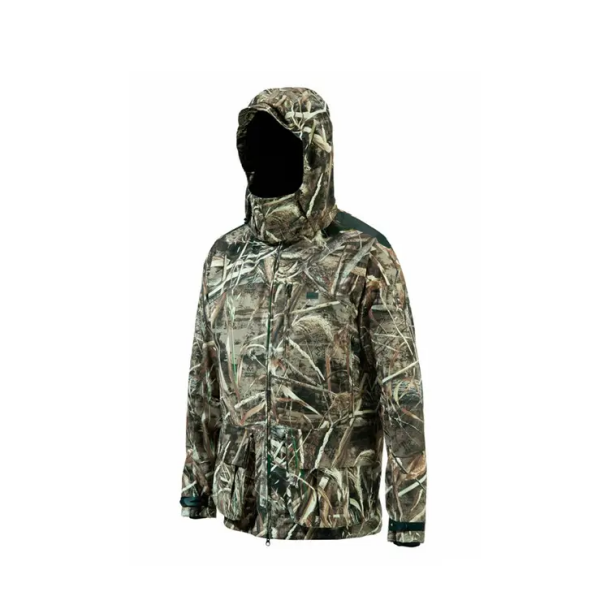

As a professional functional clothing manufacturer, Taian Bowins Garment Co., Ltd. has been focusing on the design and manufacture of professional hunting clothing for 16 years. That’s all we have about how hunting calls work during hunting activity. If you want to learn more about hunting clothing and hunting knowledge article, please visit our website. Bowins will wholeheartedly provide you with high-quality service.

